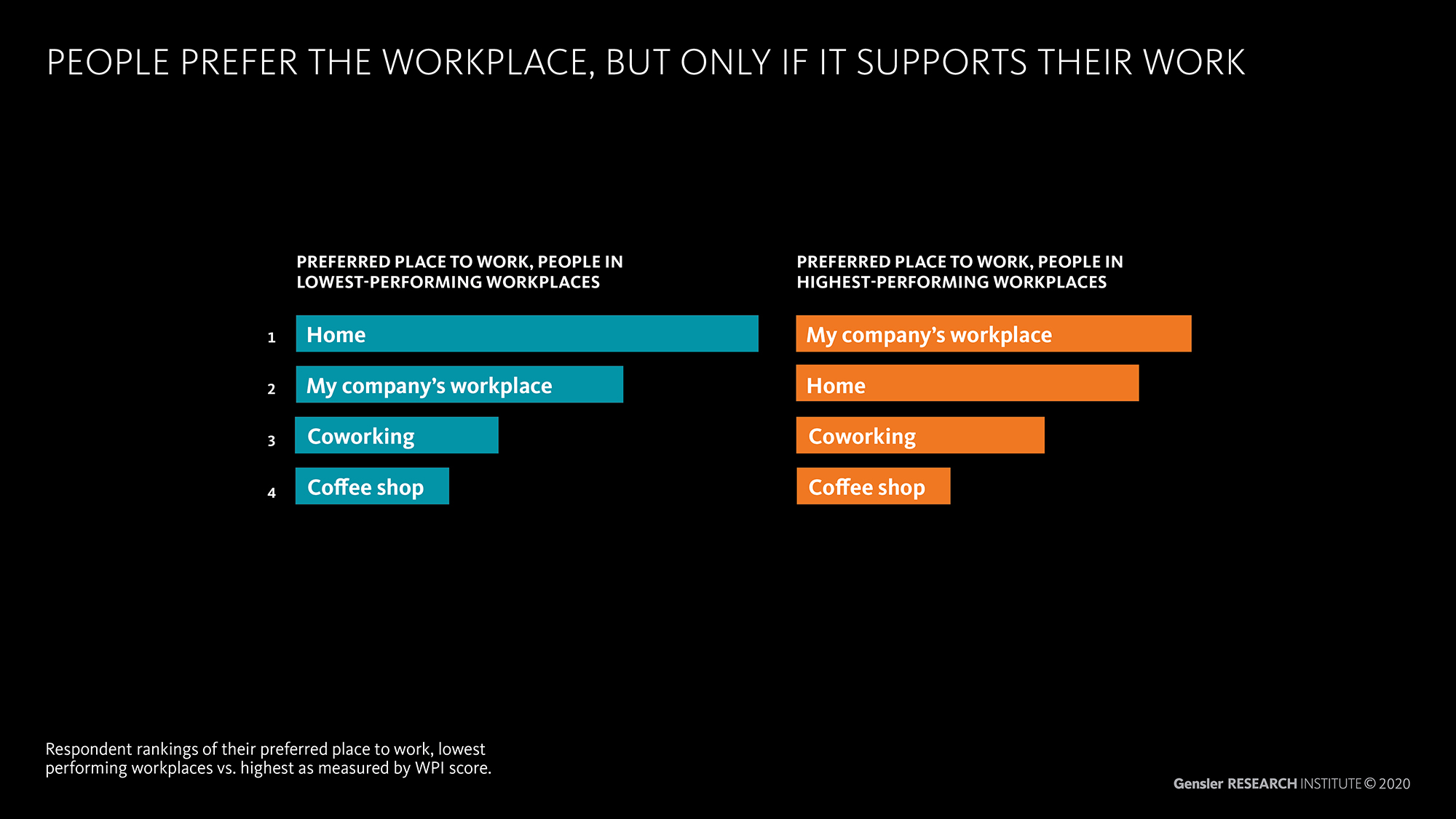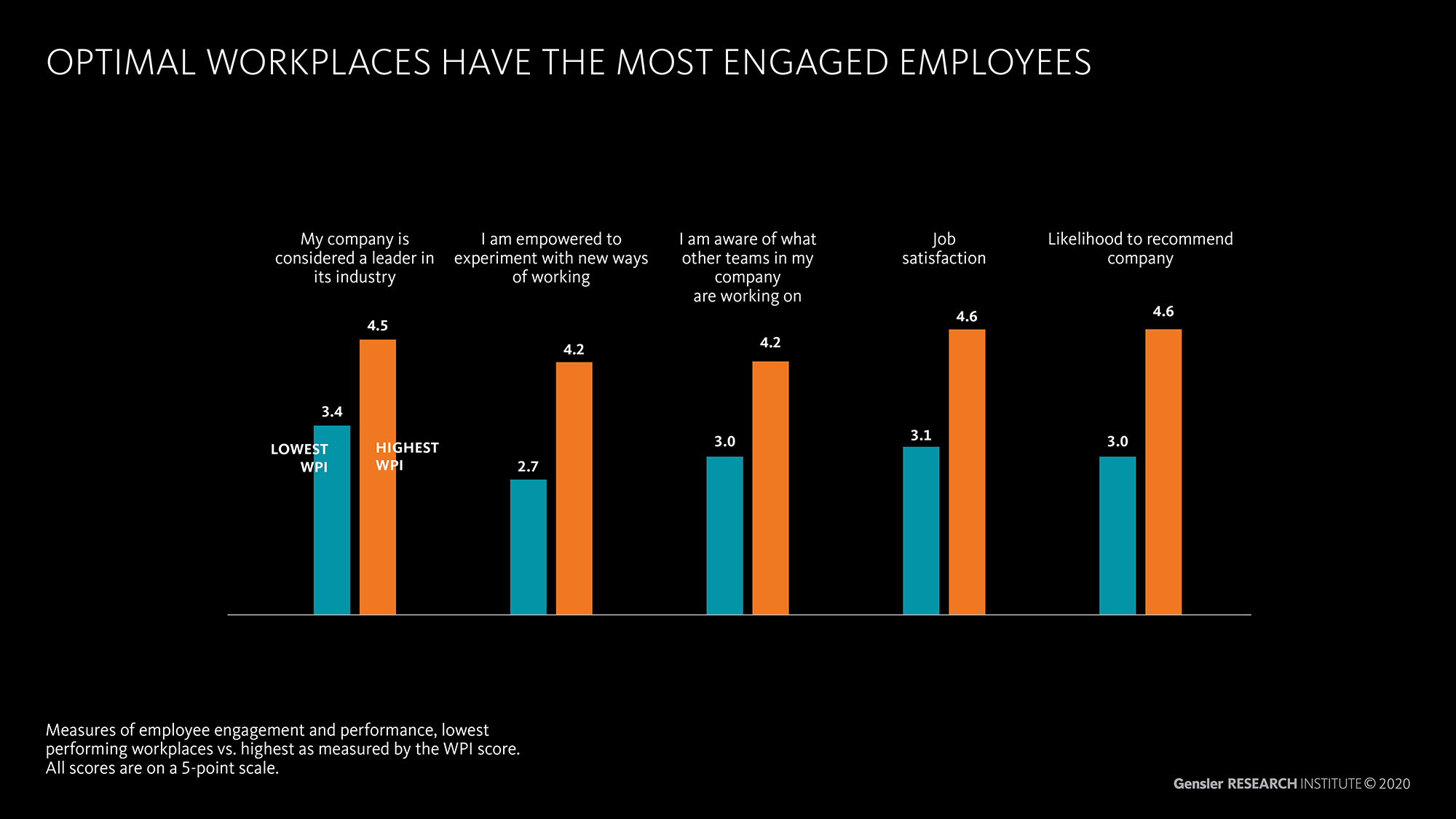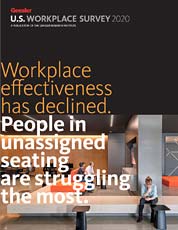Workers are using their unprecedented autonomy for mobility inside and outside the office. One-third of the workforce spends at least one day per week away from their primary office. While 40% of the workforce does spend all their time at their assigned location, increased mobility is generally related with higher performance and better experiences. Workplaces — and employers — must be responsive to the increasing complexity of work. Of workers with the autonomy to choose where they work, the vast majority will take advantage of it, working in a variety of spaces throughout their day.

PEOPLE PREFER THE WORKPLACE — WHEN IT WORKS
The more choices people have in where to work, the more important it is to understand their work preferences. We asked respondents a simple question — where would you prefer to work among these four options: a coffee shop, a coworking space, your home, or your company’s workplace? The workplace and people’s homes consistently outrank the other choices, but another interesting insight also emerged. When we segment our data between those with the highest and lowest WPI scores, we found that the workers with the highest WPI scores — those with the best performing, best designed workplaces — prefer working from their company’s office location above all other places. Those in low-performing workplaces report they would rather work from home.

THE BENEFITS OF A HIGH-PERFORMING WORKPLACE ARE WELL-PROVEN
The additional benefits of high-performance workplace environments are myriad and well-proven by both current and prior Gensler Workplace Surveys. Employees in high-performing workplaces rate their company in a more positive light, are more empowered to experiment with new ways of working, and are more aware of the impact of their work and what their colleagues are working on. They’re also more engaged, more satisfied with their jobs, and more likely to recommend their company as a place to work.
The Gensler U.S. Workplace Survey 2020 represents the input from more than 5,000 U.S. office workers across a variety of industries and demographics. The data provides new insight into what makes an effective workplace, and how workplace design and strategy can respond to new forms of mobility that are impacting the workplace today.
